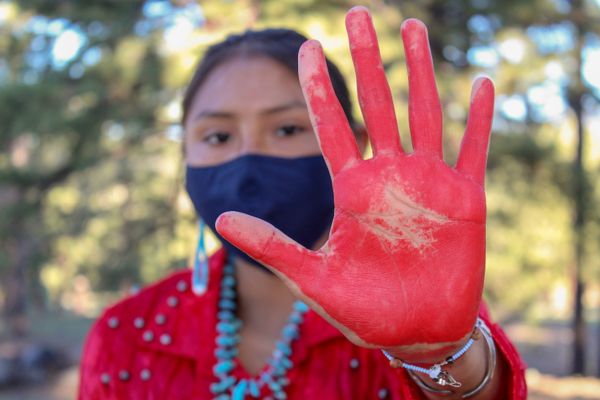
- By Elyse Wild
Family affected by the Missing and Murdered Indigenous People (MMIP) Crisis feel lackluster media coverage influences how cases are perceived by the public and pursued by law enforcement. That’s according to new guidelines released by the federal government this week on best practices for media coverage of MMIP.
The guidelines result from roundtable discussions moderated by Assistant Secretary for Indian Affairs Bryan Newland and attended by more than 200 participants, including journalists, survivors, community advocates, and Tribal and federal officials. Among the participants where members of the Not Invisible Act Commission, a 41-person committee tasked with developing recommendations improving intergovernmental collaboration on violent crimes in Indian Country and providing resources for survivors and victims’ families.
Between 2022 and 2023, the Commission held seven in-person listening sessions across Indian Country, plus one virtual session. According to the Commission’s 212-page report, more than 600 individuals attended the hearings. Of those, 260 gave testimony to the NIAC, sharing their expertise, experiences, and recommendations to address and reduce the tragic consequences of the crisis of missing, murdered, and trafficked American Indians and Alaska Natives. Many families and survivors expressed concern at the lack of media coverage or coverage that reinforces long-standing prejudice against Native communities.
The new recommendations encourage journalists to focus on an MMIP humanity rather than any potential criminal background. Also, the guidelines urge media to contextualize cases within the disparities faced by Native communities, wrought by generations of forced assimilation, broken treaty promises, and gross underfunding for health and public safety. Using language such as “crisis” vs. “epidemic” and “at-risk” vs. “vulnerable” is encouraged.
The report also features guidelines for strengthening collaboration between law enforcement and journalists, including designating public information officers to release timely information on MMIP case developments to the media.
The MMIP crisis is characterized by Native American communities experiencing disproportionately high rates of assault, abduction and murder. The crisis dates back decades, underpinned by systemic apathy, jurisdictional confusion, and underfunded law enforcement. There is no nationwide data system for MMIP information, and the actual number of MMIP cases is unknown; however, the Bureau of Indian Affairs estimates there are 4,200 unsolved cases.
LINK: https://nativenewsonline.net/currents/feds-release-media-guidelines-for-reporting-on-mmip-cases








No comments:
Post a Comment
tell us your thoughts!